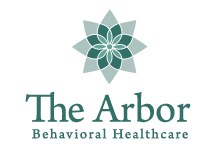There are many approaches to treatment when it comes to substance use disorder. For many, the hard part is taking the first step and seeking professional addiction treatment. The goal, of course, is recovery—a lifetime of sobriety and improved quality of life. However, maintaining recovery can be challenging, which is why aftercare and alumni programs are so important. These programs initiate after treatment is complete, and many are based around the 12-step program.
The Arbor offers treatment for substance use disorders and co-occurring mental health conditions. We develop individualized treatment plans that include aftercare and a commitment to help you with 12-step program completion. For Texas residents wondering, “Is there a 12-step near Austin?” the answer is “Yes.” Call 844.413.2690 to learn more or get started today.
What Is a 12-Step Program for Addiction Treatment?
A 12-step program is an approach to addiction recovery that is based on Alcoholics Anonymous, which was founded in 1935. This program is designed to help individuals struggling with substance use disorder find sobriety by following twelve steps.
These twelve steps are:
1. Admitting that there is a problem with alcohol or drugs (or any other addiction) and that the individual is powerless over their addiction.
2. Acknowledgement of a power greater than oneself – this can be interpreted by believers as a higher power, God, or even connecting to a community for strength and support.
3. Making the decision to turn life over to this higher power and make amends for wrongs done in the past.
4. Taking a moral inventory – looking honestly at one’s life, behavior, attitudes, and motivations.
5. Admitting specific wrongs done (to oneself and others).
6. Being willing to make amends with those who have been hurt or offended in the past.
7. Seeking forgiveness from friends and family members for any harms inflicted due to addiction or substance use disorder.
8. Make direct amends when possible, except where doing so may cause harm to self or another person.
9. Continue taking personal inventory of one’s behavior and attitudes.
10. Seek to continue growing spiritually and improving one’s relationship with the divine, a higher power, or a trusted community.
11. Pray for understanding and strength to live life clean and sober each day.
12. Share experiences and lessons learned with other addicts in recovery.
How Common Is It for an Individual to Complete the 12-Step Program?
Studies suggest that completing a 12-step program is quite common among recovering individuals, with completion rates ranging from 20%-50%. Completion rates depend on how long someone has been attending AA meetings—the longer they attend, the more likely they are to complete the 12-steps. This is true for any 12-step program; attendance leads to maintaining recovery. To have the best chance of lasting recovery, a 12-step program must become a regular part of a person’s life to instill structure and accountability into their recovery.
What Are the Benefits of Completing a 12-Step Program?
Completing a 12-step program can offer many benefits for individuals recovering from a substance use disorder. Some of the benefits of completing a 12-step program include the following:
- Improved physical and mental health
- Greater self-awareness
- Better decision-making skills
- Increased motivation for recovery maintenance
- Meaningful connection with other individuals in recovery
- Increased understanding of one’s own thoughts and emotions
Completing the 12 steps has also been linked to fewer hospital visits and less severe addiction symptoms over time.
Contact The Arbor Behavioral Healthcare Today
At The Arbor, we recognize how important it is for our clients to receive help with 12-step program completion. Our team is committed to supporting your recovery journey and helping you reach the ultimate goal of lasting sobriety and improved quality of life. Please call us at 844.413.2690 or reach out online to get started on your path toward lasting recovery.

